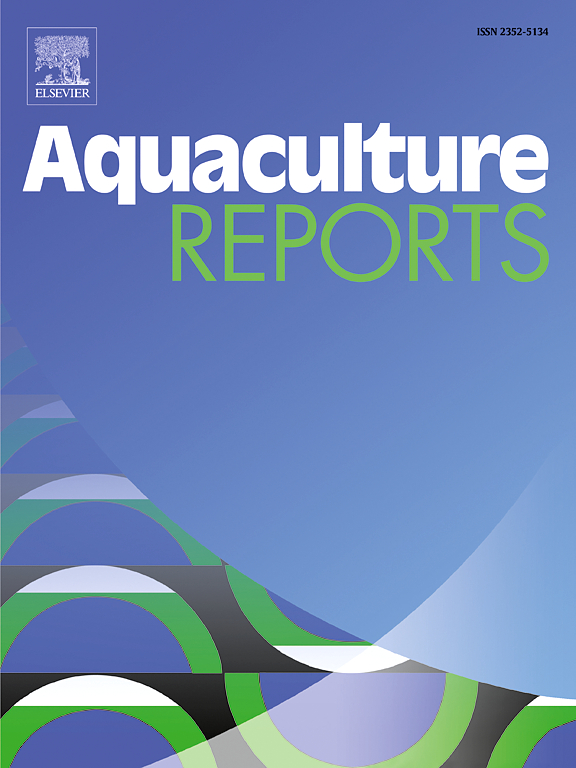Identification of the principal neuropeptide FxFa and its function in larval settlement of the echiuran worm Urechis unicinctus
IF 3.2
2区 农林科学
Q1 FISHERIES
引用次数: 0
Abstract
Larval settlement and metamorphosis are of great importance in the life history of marine benthic invertebrates, and these events are regulated by neuroendocrine signals such as neuropeptides. However, our knowledge of the molecular mechanisms which neuropeptides regulate downstream genes to induce larval settlement behavior is limited. Here, we compared the effect of eleven FxFa mature peptides, and identified FxFa5 as the principal neuropeptide in triggering the larval settlement of Urechis unicinctus (Xenopneusta, Urechidae), a benthic burrowing echiuran worm in the intertidal zones. A total of 579 differentially expressed genes (DEGs) were identified by analyzing the transcriptome data of the early-segmentation larvae from both FxFa5-treated and control groups, including a cilia-related gene such as FLNB (Filamin B) which may play vital roles in the larval settlement. Whole-mount in situ hybridization revealed FLNB was located in circumoral cilia of the early-segmentation larvae. FLNB knockdown caused the closure, shorter, even disappearance of circumoral cilia, and led to a significant increase in the larval settlement rate. The results of our work indicate FxFa5 triggers the U.unicinctus early-segmentation larval settlement by inhibiting the function of the ciliary gene FLNB, and this study contributes important data for elucidating a complete understanding of neuropeptides regulation in larval settlement of marine benthic invertebrates.
主要神经肽FxFa的鉴定及其在蛭蚓幼虫定居中的作用
在海洋底栖无脊椎动物的生活史中,幼虫的定居和蜕变具有重要的意义,这些过程受神经肽等神经内分泌信号的调控。然而,我们对神经肽调控下游基因诱导幼虫定居行为的分子机制了解有限。在这里,我们比较了11种FxFa5成熟肽的作用,并确定FxFa5是触发潮间带底栖穴居蚓unicectus (Xenopneusta, Urechidae)幼虫定居的主要神经肽。通过对fxfa5处理和对照组幼虫的转录组数据分析,共鉴定出579个差异表达基因(deg),其中包括一个可能在幼虫定居过程中起重要作用的纤毛相关基因FLNB (Filamin B)。原位杂交结果显示,FLNB位于早节段幼虫的周纤毛中。FLNB敲低导致环毛闭合、变短甚至消失,导致幼虫沉降率显著升高。我们的研究结果表明FxFa5通过抑制纤毛基因FLNB的功能触发了unicinctus早期分节幼虫的沉降,本研究为全面了解神经肽在海洋底栖无脊椎动物幼虫沉降中的调控作用提供了重要数据。
本文章由计算机程序翻译,如有差异,请以英文原文为准。
求助全文
约1分钟内获得全文
求助全文
来源期刊

Aquaculture Reports
Agricultural and Biological Sciences-Animal Science and Zoology
CiteScore
5.90
自引率
8.10%
发文量
469
审稿时长
77 days
期刊介绍:
Aquaculture Reports will publish original research papers and reviews documenting outstanding science with a regional context and focus, answering the need for high quality information on novel species, systems and regions in emerging areas of aquaculture research and development, such as integrated multi-trophic aquaculture, urban aquaculture, ornamental, unfed aquaculture, offshore aquaculture and others. Papers having industry research as priority and encompassing product development research or current industry practice are encouraged.
 求助内容:
求助内容: 应助结果提醒方式:
应助结果提醒方式:


